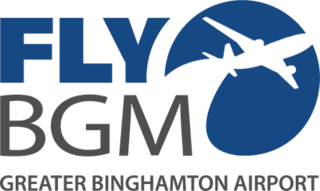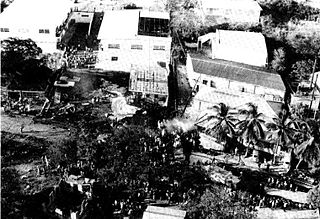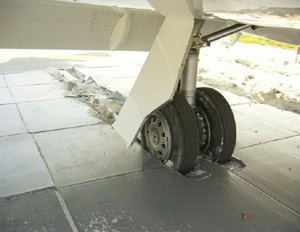| Event | Year | Location | Description |
|---|
| TAP Air Portugal Flight 425 | 1977 |  Cristiano Ronaldo International Airport, Portugal Cristiano Ronaldo International Airport, Portugal | A Boeing 727 operating the service overran the airport's runway before crashing onto the nearby beach and exploding, killing 131 of the 164 people on board. It remains TAP's only fatal accident in its history. [9] [10] The runway was 1,600 m (5,249 ft) long at the time of the crash. It would be extended in 1986 to 1,800 m (5,906 ft) and again in 2000 to 2,781 m (9,124 ft). |
| China Airlines Flight 605 | 1993 |  Kai Tak Airport, Hong Kong Kai Tak Airport, Hong Kong | To avoid a runway overrun and collision with the approach light system, the captain of a Boeing 747-400 deliberately veered the plane off the left side of the runway and into Victoria Harbour. No one was killed, but the plane was written off. |
| Philippine Airlines Flight 137 | 1998 |  Bacolod City Domestic Airport, Bacolod, Philippines Bacolod City Domestic Airport, Bacolod, Philippines | The Airbus A320-214 overran the runway due to pilot error and crashed into a residential area. There were no fatalities out of the 130 passengers and crew on board the aircraft, but three people on the ground were killed, and there were many injuries. The aircraft was written off as a loss. [11] |
| LAPA Flight 3142 | 1999 |  Aeroparque Jorge Newbery, Buenos Aires, Argentina Aeroparque Jorge Newbery, Buenos Aires, Argentina | A Boeing 737-204C overran the runway after the pilots accidentally attempted to take off with the flaps retracted. The plane sped across a highway, striking a car, before smashing into construction equipment and bursting into flames, killing 63 of the 100 people aboard, as well as 2 people on the ground, and injuring 3 on the ground as well. |
| American Airlines Flight 1420 | 1999 |  Little Rock National Airport, Little Rock, Arkansas, U.S. Little Rock National Airport, Little Rock, Arkansas, U.S. | A McDonnell Douglas MD-82 overran the runway, crashed into an approach lighting structure, and broke apart, killing 11 of the 145 occupants. |
| Southwest Airlines Flight 1455 | 2000 |  Bob Hope Airport, Burbank, California, U.S. Bob Hope Airport, Burbank, California, U.S. | A Boeing 737-300 landed too fast to stop on a wet runway, crashed through a perimeter wall and came to a stop near a gas station. Everyone survived, but due to structural damage the aircraft was written off. |
| Lion Air Flight 538 | 2004 |  Adisumarmo International Airport, Surakarta, Indonesia Adisumarmo International Airport, Surakarta, Indonesia | While landing in wet weather, the McDonnell Douglas MD-82 overran the runway due to hydroplaning and poor aircraft braking performance. After leaving the runway, the aircraft struck an embankment and split into two sections. 25 of the 153 people on board were killed. |
| Southwest Airlines Flight 1248 | 2005 |  Midway International Airport, Chicago, Illinois, U.S. Midway International Airport, Chicago, Illinois, U.S. | A Boeing 737-700 overran the runway while landing in a snowstorm and crashed into automobile traffic, killing one person on the ground. |
| Air France Flight 358 | 2005 |  Toronto Pearson International Airport, Toronto, Canada Toronto Pearson International Airport, Toronto, Canada | An Airbus A340 overran the end of the runway and came to rest in a ravine. 43 people were injured, and the aircraft was destroyed by a post-crash fire. |
| S7 Airlines Flight 778 | 2006 |  Irkutsk International Airport, Irkutsk, Russia Irkutsk International Airport, Irkutsk, Russia | The Airbus A310 overshot the runway and struck a concrete barrier at high speed, causing the aircraft to break apart and igniting a massive fire. 125 of the 203 occupants were killed. |
| Garuda Indonesia Flight 200 | 2007 |  Adisutjipto International Airport, Yogyakarta, Indonesia Adisutjipto International Airport, Yogyakarta, Indonesia | During landing, the Boeing 737-400 departed the runway, crashed into a rice field and burst into flames. Of the 140 occupants, 21 were killed. |
| TAM Airlines Flight 3054 | 2007 |  São Paulo–Congonhas Airport, São Paulo, Brazil São Paulo–Congonhas Airport, São Paulo, Brazil | An Airbus A320 overran the runway while landing in rain, and crashed into a warehouse. All 187 people on board, and 12 people on the ground, were killed. |
| Sriwijaya Air Flight 62 | 2008 |  Sultan Thaha Airport, Jambi Sultan Thaha Airport, Jambi | The Boeing 737-200 overran the runway due to a hydraulics malfunction of the aircraft and crashed into a house. There were no fatalities out of the 130 passengers and crew on board the aircraft, but one person inside the house was killed. The aircraft received substantial damage and was written off. [12] |
| American Airlines Flight 331 | 2009 |  Norman Manley International Airport, Kingston, Jamaica Norman Manley International Airport, Kingston, Jamaica | A Boeing 737-800 landing in rain and a tailwind touched down more than 4,000 feet from the start of the runway. Unable to stop in the remaining distance, it broke apart on rocks near the shoreline. No one was killed, but 85 people were injured and the plane was destroyed. |
| Air India Express Flight 812 | 2010 |  Mangalore International Airport, Mangalore, India Mangalore International Airport, Mangalore, India | The Boeing 737-800 overshot the end of the runway, went through a 300 feet (91 m) sand arrestor bed meant as excursion protection, then slid down a steep hillside. 158 of the 166 occupants were killed. |
| Caribbean Airlines Flight 523 | 2011 |  Cheddi Jagan International Airport, Georgetown, Guyana Cheddi Jagan International Airport, Georgetown, Guyana | A Boeing 737-800 overran the runway while attempting to land in rainy weather. All occupants survived, but the aircraft was irreparably damaged and seven people were injured. |
| Red Wings Airlines Flight 9268 | 2012 |  Vnukovo International Airport, Moscow, Russia Vnukovo International Airport, Moscow, Russia | A Tupolev TU-204-100 overran the runway during landing due to a braking system failure and pilot error and collided with a ravine at the end of the runway. The aircraft was destroyed and 5 out of the 8 occupants were killed. This accident was the first fatal accident of the TU-204 since its introduction in 1989. |
| Pegasus Airlines Flight 8622 | 2018 |  Trabzon Airport, Trabzon, Turkey Trabzon Airport, Trabzon, Turkey | A Boeing 737-800 ran off the left side of the runway during landing and slid down a cliff, stopping short of the water. No one was killed, but the aircraft was destroyed. |
| Sky Lease Cargo Flight 4854 | 2018 |  Canada Halifax Stanfield International Airport, Nova Scotia, Canada Canada Halifax Stanfield International Airport, Nova Scotia, Canada | A Boeing 747-400F overran Runway 14 while attempting a landing. Three crew members are injured and the aircraft is damaged beyond repair. As of May 2024, this is the most recent 747 hull loss. |
| Pegasus Airlines Flight 2193 | 2020 |  Sabiha Gökçen International Airport, Istanbul, Turkey Sabiha Gökçen International Airport, Istanbul, Turkey | A Boeing 737-800 overran the runway while landing in heavy rain and high winds, and broke into several pieces. 3 of the 183 people aboard were killed. |
| Air India Express Flight 1344 | 2020 |  Calicut International Airport, Kerala, India Calicut International Airport, Kerala, India | A Boeing 737-800 overran the tabletop runway, skidding off the end of the runway and crashing into a gorge. The aircraft was carrying 190 people including 6 crew members. A total of 21 people, including both pilots, were killed in the crash. |
| Korean Air Flight 631 | 2022 |  Mactan–Cebu International Airport, Lapu-Lapu City, Cebu, Philippines Mactan–Cebu International Airport, Lapu-Lapu City, Cebu, Philippines | An Airbus A330-322 overran the runway while landing due to a hydraulic failure. Despite what reports described as a "terrifying close call," all 173 passengers and crew members survived without injuries. The aircraft was damaged beyond repair and written off as a result of the accident. |
| Air Serbia Flight 324 | 2024 |  Belgrade Nikola Tesla Airport, Belgrade, Serbia Belgrade Nikola Tesla Airport, Belgrade, Serbia | An Embraer 195 overran during takeoff and struck runway lights before being airborne. All 111 passengers and crew members survived without injuries. The aircraft was damaged beyond repair and written off and will be dismantled. |

















